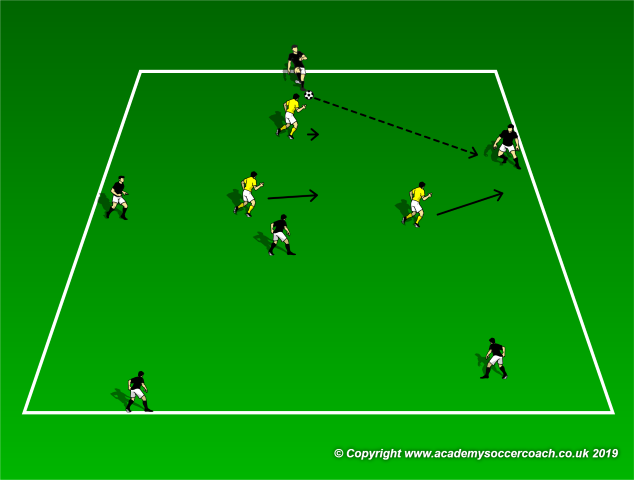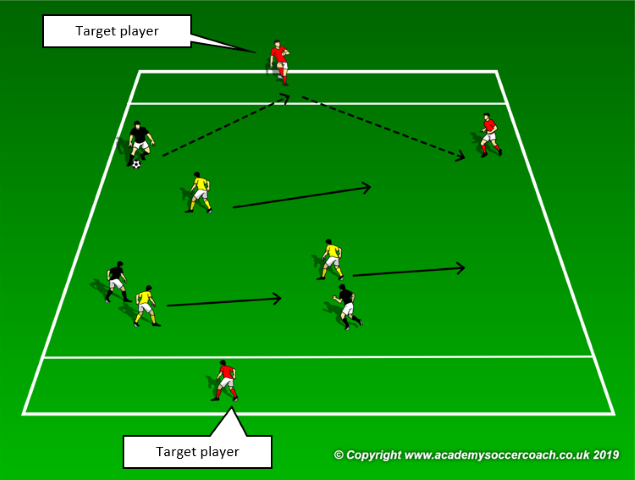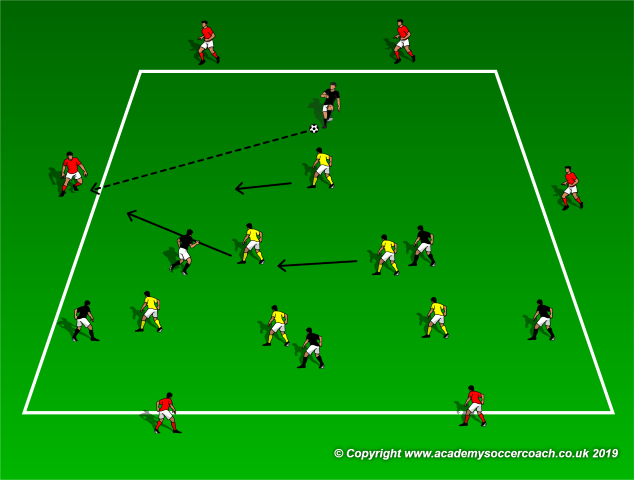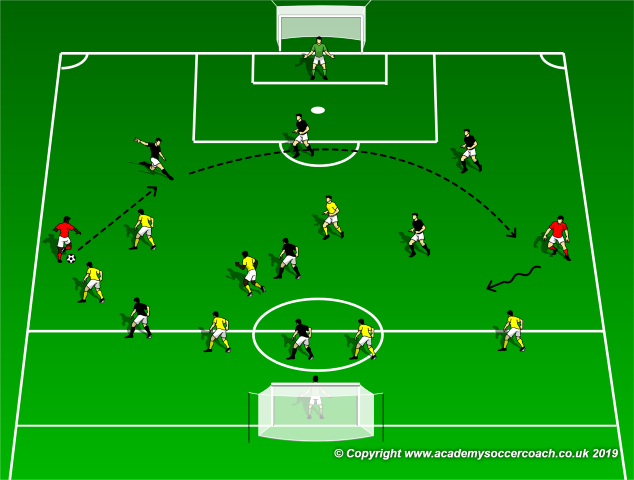By Philip Cauchi
Introduction: In our sixth session on the series about the principles of defending, we focus on denying the opponents the opportunity of constructing a well-executed build-up. This requires our players to identify how to deny the opponents space and cut off the supply of passes to the forwards. It is of great importance during this session to focus on identifying the right moment to apply pressure on the ball, the angles of cover, and the distances between our players.
Players: Two goalkeepers and sixteen outfield players.
Total duration: Approximately 90 minutes.
Moment of play: Opponents in possession.
Team task: Deny the build-up.
Theme: Defending in midfield.
Main aim: Prevent penetration, win the ball and counter.
Key performing outcomes:
1. Compactness.
2. Staggered angles with players covering each other well.
3. First defender to make play predictable.
4. Overload ball area to create numerical superiority.
5. Mark potential pass receivers.
6. Cut off passing lanes.
Equipment:
Balls, bibs (one set of seven and another of six), markers to mark pitch dimensions and two regular goalposts.
Warm-up: Movement preparation and technical-tactical activation – 6v3 rondo.
Targeted outcomes: All (in the 6v3 rondo).
Duration: 25 minutes.
Players: Six attackers and three defenders (in the 6v3 rondo).
Area: 12 yards by 10 yards (for the 6v3 rondo).
Description: Start with movement preparation to switch on the nervous system to perform soccer specific movements. Start with running coordination and multi-directional movement while including dynamic stretching and mobility exercises to prepare the muscles and joints to perform movements at a high range of motion. This increases both the technical-tactical performance while reducing the risk of injuries. End this phase of the session with six reactive sprints over a distance of ten meters. Time allotted to this phase should be of fifteen minutes.

In the 6v3 rondo the defenders aim to win the ball and guide it out of the area to score a point. If the attackers make five sequential passes they score a point. Two points are scored for every splitting pass. The aim here is to develop the players’ mentality to not defend for the sake of defending, but to defend to win possession of the ball.
Game 1: 3v3+3 – Prevent the pass to the target player.
Targeted outcomes: All.
Duration: 15 minutes – 4 x 3 minutes with 1 minute of rest in between series.
Players: Three teams of three players each.
Area: 30 yards by 20 yards.
Description: Both teams aim to play the ball to the opposite target player. The team in possession is aided by the neutral player (red in the middle). If a pass to the opposite target player is achieved, the team that made the pass scores a point and keeps possession with the aim of attacking in the opposite direction. In this activity it is imperative that the team without the ball retains shape and compactness to prevent through passes, while moving together in a rhytmically.

Progression: In the third and fourth sets remove the neutral player and have the attacking team playing with a player more. This forces the defending team to work harder in order to prevent the team with the ball to play in verticality.
Game 2: 6v6+6 – Prevent the forward pass.
Targeted outcomes: All.
Duration: 20 minutes (2 x 9 minutes with 2 minutes of rest).
Players: Three groups of six players.
Area: 60 yards by 40 yards.
Description: Both teams aim to play the ball to any of the two target players on the opposite side. If this aim is achieved the team scores a point, retains possession and attacks in the opposite direction. The two neutral players on the flanks not only help the team in possession keep the ball but may also play vertical passes to the target players. The target players play with the team in possession. If a point is scored, the ball may still be played to the same target players (neutrals) but for the purpose of maintaining possession only.

In the above illustration, the defending team (yellows) position two players between the lines so to eliminate the possibility of the opponents playing the ball in these zone and risk the back line getting outnumbered. Furthermore, when the ball is played onto the neutral player on the flank, the defenders slide to overload while still keeping one a player guarding this zone.
Game 3: 8v8+2.
Targeted outcomes: All.
Duration: 20 minutes (2 x 9 minutes with 2 minutes of rest).
Players: Two teams of eight players including goalkeepers and two neutral wing players.
Area: 70 yards by 60 yards.
Description: Normal game with goalkeepers where each team attacks a goal and defends the opposite. The coach may opt to line up the teams in different formations. In the below diagram we have the yellow team lined up in a 1-4-3 formation while the black team is lined up in a 1-3-3-1 formation. The two neutral players remain wide but are allowed to cut inside whenever they have the opportunity and space to do so. Communicate with the players the strengths and weaknesses of each formation in the defensive phase of the game.
Let’s take the yellow team as an example. The yellows can cover the width better with four at the back and have a strong central block with three midfielders positioned close to each other. The disadvantage of this system of play is when there is a rapid switch in the point of attack. There is a high risk that the yellow team’s full back will have to face the winger in a 1v1 or worse be outnumbered 2v1 (see below diagram).
The black team are strong in central areas but are vulnerable on the flanks. As the blacks play with three at the back it becomes very hard for them to cover all the width. With players of a higher tactical level we discuss with them the possibility of having one player from midfield dropping into the back line while a forward drops to cover his position.
In any of the formations we use we should emphasise compactness, shifting together as a team, covering spaces well and identifying the correct moment to apply pressure on the ball. If the players understand these principles we should also question them to identify in which zones we should invite the opposition to play to increase our chance of winning the ball.

Conclusive part.
Duration: 10 minutes.
In the conclusive part the players perform light juggling exercises to start the regeneration phase. Static stretching exercises should also be carried out during this phase.
By Philip Cauchi


